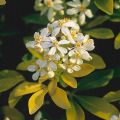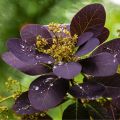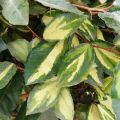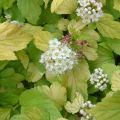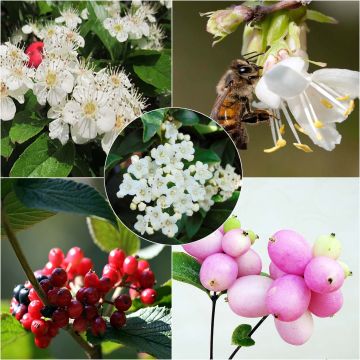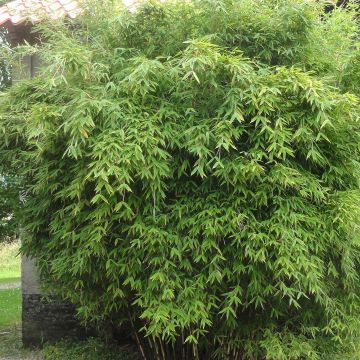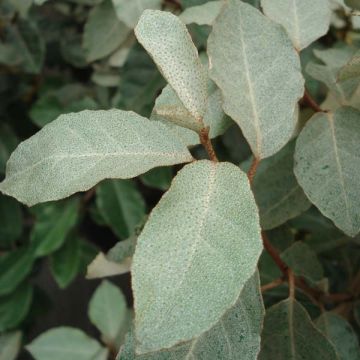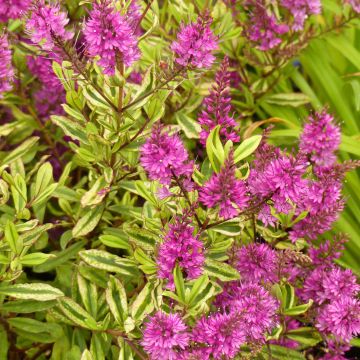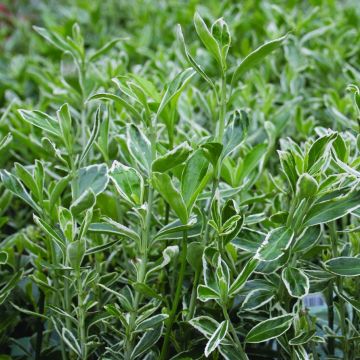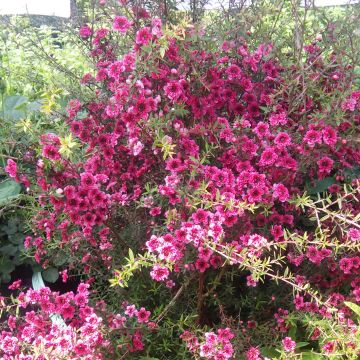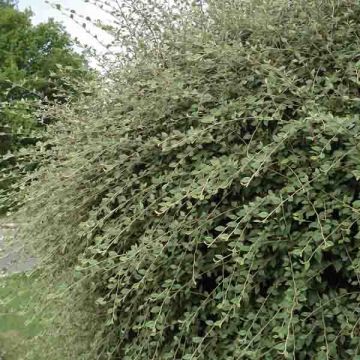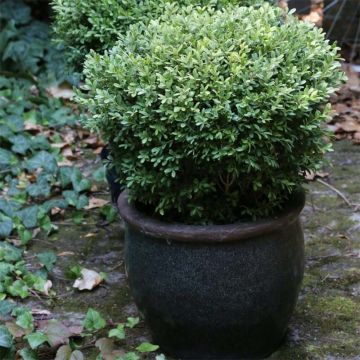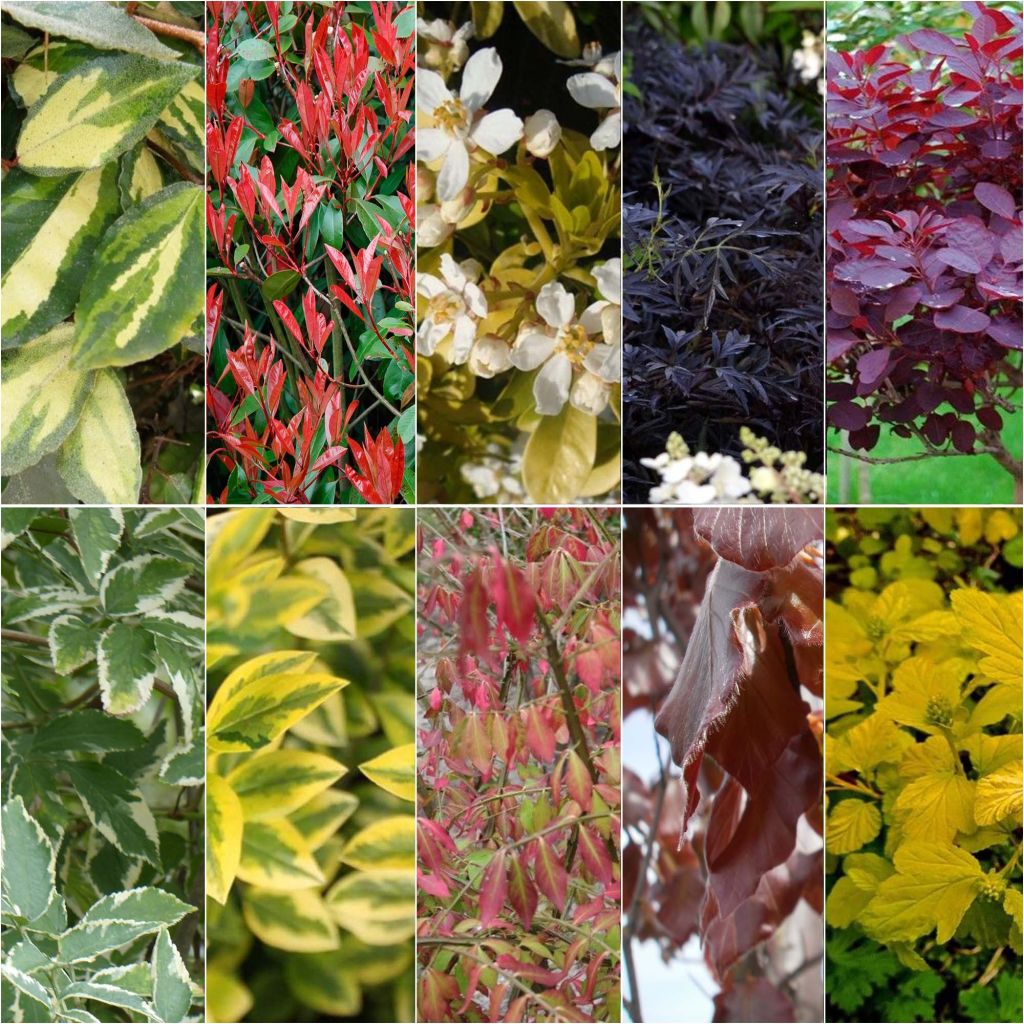

Colourful Eco Hedge Collection.
Colourful Eco Hedge Collection.
This plant carries a 24 months recovery warranty
More information
We guarantee the quality of our plants for a full growing cycle, and will replace at our expense any plant that fails to recover under normal climatic and planting conditions.
From €5.90 for pickup delivery and €6.90 for home delivery
Express home delivery from €8.90.
Does this plant fit my garden?
Set up your Plantfit profile →
Collection items (10 plants)
Description
This is a collection of 10 varieties of hedging shrubs that are easy to grow and maintain, selected for their remarkable foliage in various colours, deciduous or evergreen in winter. They are perfect for creating a changing and colourful hedge throughout the seasons. This kit of 10 plants in pots can be used to create approximately 10 metres (33 feet) of colourful foliage hedging.
The collection includes:
- 1 Choisya ternata Sundance - Mexican Orange Blossom: approximately 2 metres (7 feet) in height and 1.50 metres (5 feet) in spread. It is a compact bush with a rounded habit and evergreen foliage in winter. The leaves are aromatic and start off yellow-gold in spring, turning tender green, making it a bright focal point in the garden. The small pure white flowers, delicately fragrant, bloom in spring and reappear in autumn.
- 1 Cornus alba Elegantissima - White Dogwood: approximately 2 metres (7 feet) in all directions. Its grey-green foliage margined and variegated with cream-white turns pink and yellow in autumn before falling, revealing its dark coral red stems. Cream-white flowers bloom in May-June in small flat heads, followed by small round fruits that turn bluish-white.
- 1 Cotinus coggygria Royal Purple - Smoke Bush: approximately 3.50 metres (11 feet) in height and 2.50 metres (8 feet) in width, with a slightly wild habit. It has beautiful deciduous foliage in dark purple-violet, turning into flamboyant colours in autumn before falling. The flowers in June are made of yellow-green panicles, which transform into long panicles of smoky pink-purple. In autumn, both the panicles and foliage take on sumptuous colours, ranging from orange to dark pink and scarlet red.
- 1 Elaeagnus pungens Maculata - Silverberry: approximately 3.50 metres (11 feet) in height and 3 metres (10 feet) in spread if not pruned. Its evergreen leaves are a brilliant green colour with dark yellow central spots. The fragrant flowering occurs in autumn, in October-November: the pendulous bell-shaped flowers are silvery-white and discreetly fragrant. The fruits are small olive-like berries that turn coppery when ripe.
- 1 Euonymus alatus - Winged Spindle: approximately 2 metres (7 feet) in all directions, with slow growth. Its winged branches with 4 prominent and thin cork bands bear deciduous leaves that change from medium green to pink, dark red, and brilliant purple in autumn before falling. The insignificant small white-greenish flowers give way to very decorative reddish-purple berries containing orange seeds.
- 1 Fagus sylvatica Atropurpurea - Purple Beech: this tree can reach 20 metres (66 feet) in height and 15 metres (49 feet) in spread if not pruned. It is appreciated for its dense foliage, composed of undulating and hairy leaves that go from pale green to coppery violet. The leaves are marcescent, meaning they dry up but remain on the tree until the following spring when new leaves appear. It blooms in spring with male catkins in yellow and female flowers in green, followed by shiny brown fruits called beechnuts, covered with prickles.
- 1 Photinia Red Robin: on average, 3 metres (10 feet) in height and 2 metres (7 feet) in spread without pruning, it stands out with its red young shoots and leaves, contrasting with its mature foliage of shiny dark green. Spring flowering (from March to May depending on the region) occurs in clusters of small flowers that are somewhat uncertain in colour, fragrant and nectar-rich. Its foliage is evergreen.
- 1 Physocarpus Dart's Gold - Ninebark: approximately 2 metres (7 feet) in height and 1.50 meters (5 feet) in spread. This deciduous shrub has a rustic appearance and decorative golden yellow foliage from spring to autumn, which falls at the end of the season. Its white flowers are grouped in balls in May-June and are followed by small red fruits tinged with green in late summer-autumn.
- 1 Sambucus nigra Black Lace (Eva) - Black Elder: approximately 2.50 metres (8 feet) in height and 3 metres (10 feet) in spread. Its finely cut foliage resembles that of Japanese maples, maintaining its dark purple, almost black colour throughout the season. In June, it bears delicate clusters of pinkish flowers that fade to creamy white, then giving way to red berries that turn black and are enjoyed by birds.
- 1 Ligustrum ovalifolium Aureum - Golden Privet: approximately 2 metres (7 feet) in height and 1.50 metres (5 feet) in spread. It has very dense foliage, semi-evergreen in winter, consisting of glossy, narrow, oval leaves with wide margins of golden yellow, appearing very early in spring. It blooms in June-July with panicles of small, highly fragrant, cream-white flowers. After flowering, small spherical black berries appear in autumn, which will persist during part of the winter.
This mixed hedge provides colour to the garden almost all year round. In addition to the appeal of foliage and flowers, it also offers attractive berries that will delight birds during the colder months. Plant these bushes preferably in autumn or early spring, in full sun or partial shade, mixing them together and spacing them 70 cm (28in) to 1 metre (3 feet) apart (1.20 metres (4 feet) for the wider ones). They are suitable for any well-prepared garden soil enriched with leaf compost.
Tip: Only prune if necessary to limit growth, individually on each bush, and preferably after flowering or in winter.
Report an error about the product description
Plant habit
Flowering
Foliage
Botanical data
Cultivar or hybrid
Other Flowering hedge kits
Planting and care
Plant this kit in all regions except those that are too dry or experience very harsh winters (Mexican orange blossom are moderately frost resistant). Plant this collection in the sun or partial shade, in ordinary but well-prepared soil, enriched with leaf compost, that is rather moist but well-drained. Dig planting holes of 30-40 cm (12-16in) in all directions, thoroughly loosening the bottom and walls with a fork or pickaxe. Maintain a planting distance of 80 cm (32in) to 1 m (3ft) between each bush. Easy to grow and not very demanding, these shrubs only require mulching in summer in dry climates to maintain some moisture, at least during the first summers after planting. Water them abundantly in the first few years in the case of pronounced drought (15-20 litres of water each time), but keep waterings spaced out. You can prune the longest branches to help your shrubs branch out.
Planting period
Intended location
Care
This item has not been reviewed yet - be the first to leave a review about it.
Hedge shrubs
Haven't found what you were looking for?
Hardiness is the lowest winter temperature a plant can endure without suffering serious damage or even dying. However, hardiness is affected by location (a sheltered area, such as a patio), protection (winter cover) and soil type (hardiness is improved by well-drained soil).

Photo Sharing Terms & Conditions
In order to encourage gardeners to interact and share their experiences, Promesse de fleurs offers various media enabling content to be uploaded onto its Site - in particular via the ‘Photo sharing’ module.
The User agrees to refrain from:
- Posting any content that is illegal, prejudicial, insulting, racist, inciteful to hatred, revisionist, contrary to public decency, that infringes on privacy or on the privacy rights of third parties, in particular the publicity rights of persons and goods, intellectual property rights, or the right to privacy.
- Submitting content on behalf of a third party;
- Impersonate the identity of a third party and/or publish any personal information about a third party;
In general, the User undertakes to refrain from any unethical behaviour.
All Content (in particular text, comments, files, images, photos, videos, creative works, etc.), which may be subject to property or intellectual property rights, image or other private rights, shall remain the property of the User, subject to the limited rights granted by the terms of the licence granted by Promesse de fleurs as stated below. Users are at liberty to publish or not to publish such Content on the Site, notably via the ‘Photo Sharing’ facility, and accept that this Content shall be made public and freely accessible, notably on the Internet.
Users further acknowledge, undertake to have ,and guarantee that they hold all necessary rights and permissions to publish such material on the Site, in particular with regard to the legislation in force pertaining to any privacy, property, intellectual property, image, or contractual rights, or rights of any other nature. By publishing such Content on the Site, Users acknowledge accepting full liability as publishers of the Content within the meaning of the law, and grant Promesse de fleurs, free of charge, an inclusive, worldwide licence for the said Content for the entire duration of its publication, including all reproduction, representation, up/downloading, displaying, performing, transmission, and storage rights.
Users also grant permission for their name to be linked to the Content and accept that this link may not always be made available.
By engaging in posting material, Users consent to their Content becoming automatically accessible on the Internet, in particular on other sites and/or blogs and/or web pages of the Promesse de fleurs site, including in particular social pages and the Promesse de fleurs catalogue.
Users may secure the removal of entrusted content free of charge by issuing a simple request via our contact form.
The flowering period indicated on our website applies to countries and regions located in USDA zone 8 (France, the United Kingdom, Ireland, the Netherlands, etc.)
It will vary according to where you live:
- In zones 9 to 10 (Italy, Spain, Greece, etc.), flowering will occur about 2 to 4 weeks earlier.
- In zones 6 to 7 (Germany, Poland, Slovenia, and lower mountainous regions), flowering will be delayed by 2 to 3 weeks.
- In zone 5 (Central Europe, Scandinavia), blooming will be delayed by 3 to 5 weeks.
In temperate climates, pruning of spring-flowering shrubs (forsythia, spireas, etc.) should be done just after flowering.
Pruning of summer-flowering shrubs (Indian Lilac, Perovskia, etc.) can be done in winter or spring.
In cold regions as well as with frost-sensitive plants, avoid pruning too early when severe frosts may still occur.
The planting period indicated on our website applies to countries and regions located in USDA zone 8 (France, United Kingdom, Ireland, Netherlands).
It will vary according to where you live:
- In Mediterranean zones (Marseille, Madrid, Milan, etc.), autumn and winter are the best planting periods.
- In continental zones (Strasbourg, Munich, Vienna, etc.), delay planting by 2 to 3 weeks in spring and bring it forward by 2 to 4 weeks in autumn.
- In mountainous regions (the Alps, Pyrenees, Carpathians, etc.), it is best to plant in late spring (May-June) or late summer (August-September).
The harvesting period indicated on our website applies to countries and regions in USDA zone 8 (France, England, Ireland, the Netherlands).
In colder areas (Scandinavia, Poland, Austria...) fruit and vegetable harvests are likely to be delayed by 3-4 weeks.
In warmer areas (Italy, Spain, Greece, etc.), harvesting will probably take place earlier, depending on weather conditions.
The sowing periods indicated on our website apply to countries and regions within USDA Zone 8 (France, UK, Ireland, Netherlands).
In colder areas (Scandinavia, Poland, Austria...), delay any outdoor sowing by 3-4 weeks, or sow under glass.
In warmer climes (Italy, Spain, Greece, etc.), bring outdoor sowing forward by a few weeks.

































